 Facebook
Facebook
 X
X
 Instagram
Instagram
 TikTok
TikTok
 Youtube
Youtube
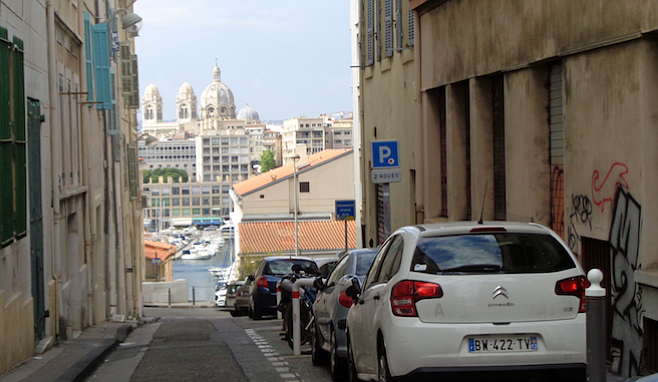
Marseille has never gotten its due as a vacation destination. Most people traveling to southern France pass through Marseille’s airport and move directly on to the more pristine and tony Provencal destinations, such as Aix-en-Provence or Nice. This was undoubtedly because of Marseille’s reputation for crime and seediness. So imagine our surprise when we found France’s oldest and second-largest city had upgraded itself from ordinaire to merveilleux.
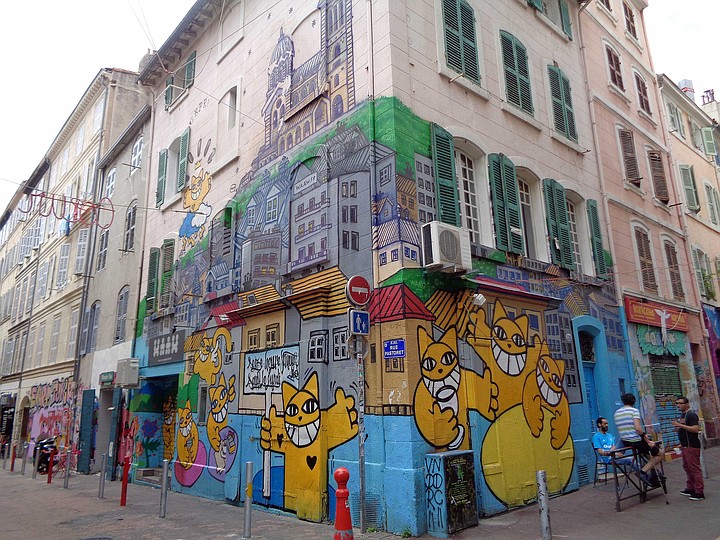
If you haven't been lost in Marseille, you simply haven’t been there. Just as Paris has its twenty arrondisements, Marseille has sixteen districts, each of which has its own special flavor and contrasts.
One of the really hip neighborhoods at the moment is called Le Panier — or "the basket." Most tour guides will tell you that is because of the large market that was located there during the Middle Ages, but I think it has more to do with its history-laden narrow streets resembling reeds or rushes weaving in, out, and around, before popping out on the other side where you least expect them to. One thing is for sure: it has well-earned its moniker of “the village for goats,” so named for its steep inclines, some of which even centuries ago had handrails placed down their center.
Today the area is home to a pleasant mix of artists, hipsters, and working class who all combine to bestow a faded, well-lived-in feel of a separate village within the city. Locals sit and chat with each other, some drink tea and others sip on their cloudy glasses of pastis; children play noisily in its streets; and laundry rustles from nearly every window. Somehow, many of the original occupants have not been displaced even though the area has become an “in" place in which to live.
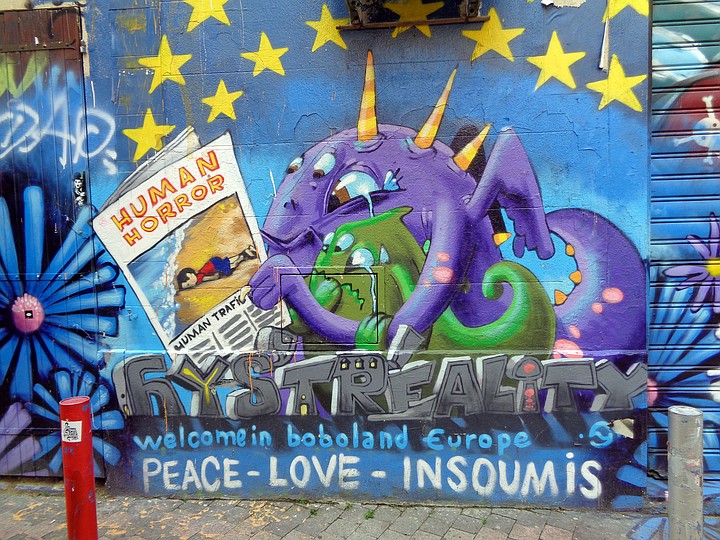
Street art delighted us as we walked throughout the city, and Cours Julien, another hip, hilltop neighborhood, is the epicenter of this phenomenon. Subjects range from the advertisement for a café or restaurant to opinions on social issues. Much of the works are done by local artists, although you'll also find familiar themes such as a building entirely decorated by Monsieur Chat, also known as M. Chat, complete with cats sporting 100-watt smiles (who you will undoubtedly remember from the 2004 documentary The Case of the Grinning Cat).
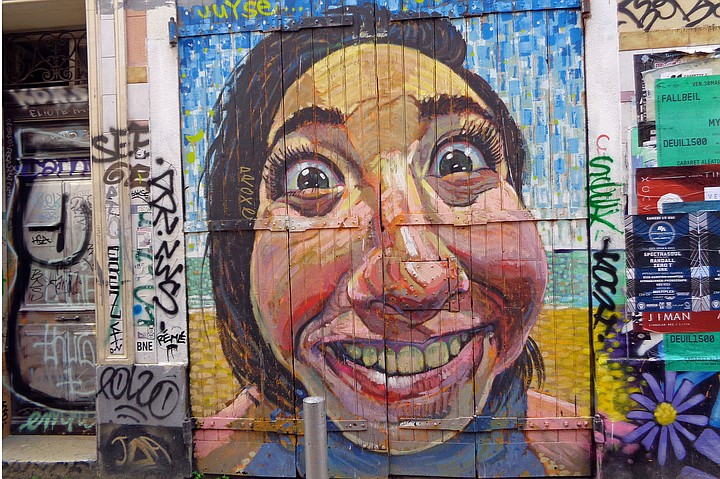
The size of the street graffiti pieces also varied widely. Some required nose-to-wall distance to discern the nuances, while others were so monumental that only by backing into the wall on the other side of the street could you take in the entire piece.
Marseille not only has neighborhoods for exploring, but also is a city of great museums, which are made even more enjoyable by their stunning surroundings. For example, the Museum of Fine Arts and the Museum of Natural History are each housed in the two wings of the Palais du Longchamps, a magnificent building completed in 1879. The center of that building embraces a huge fountain, probably the most impressive we've ever seen.
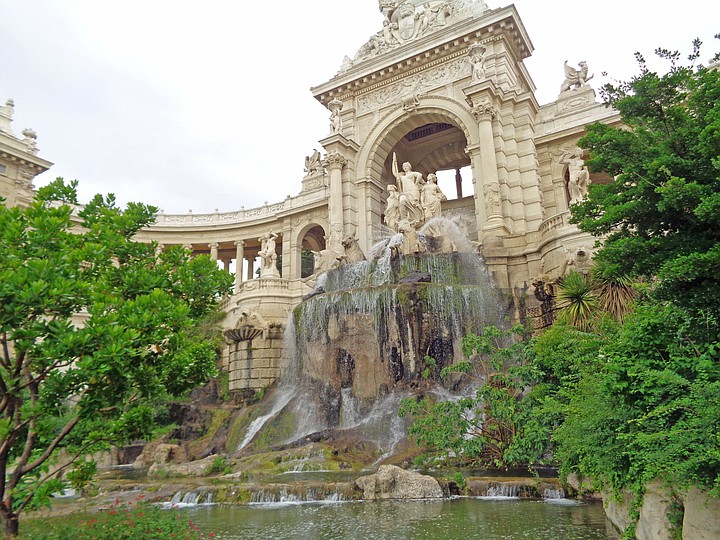
At the summit of the fountain are sculptures of four giant bulls and three women, behind which is a stone grotto decorated with carved stalactites and nymphs. Beneath these, water flows into a secondary basin, and finally into a man-made pond. From the pond, the water is directed into underground pipes, from which it emerges as a cascading waterfall, as well as through twelve lion bronze fountains, before its final descent into a second, larger pond. Really quite spectacular.
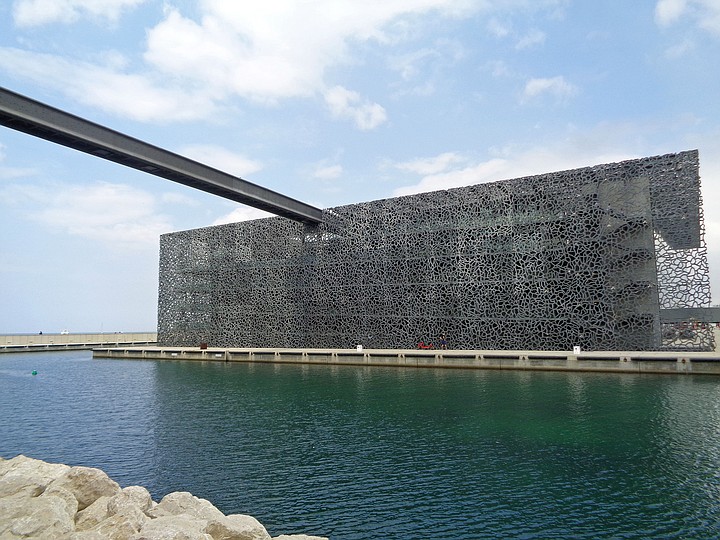
Moving to the modern era, a museum built to live up to the city’s designation as the European Capital of Culture in 2013 is both an architectural wonder and full of interesting exhibits. Known popularly as MuCEM, the Museum of the Civilizations of Europe and the Mediterranean, its exterior is made of a latticework shell of strong concrete, giving what some call the look of a veil, or perhaps a mantilla. Based right on the water at the harbor, the views from its roof and windows are nothing less than spectacular. Inside are a range of exhibits, many including films and interactive displays. We lucked upon a fabulous show of stage sets and costumes that Picasso had done for the Ballet Russe during one stage of making ends meet as a starving artist. In addition to examples of some of the costumes he created, there was a film in which ballets were performed using the sets.
With too much to choose from to fill one’s days in Marseille, at least the choice of souvenirs from your trip is simple: soap. Mark Twain famously said of Marseilles: “In Marseilles they make half the toilet soap we consume in America, but the Marseillaise only have a vague theoretical idea of its use.” The manufacture of soap has been a long tradition in this city. Back in the 17th century, Marseille was the ideal manufacturing base, with Provence providing bounteous quantities of the ingredients used to make soap: olive oil, lye and Camargue salt, which gives off the scent of violets as it dries. And being a port city made it an ideal location to export it around the world. The soap of Marseille has even been awarded its own Protected Geographical Indication (PGI) much like the appellation d'origine contrôlée of wines. Our Marseilles friends swear by its use for cleansing sensitive skin, healing minor wounds and removing stains. It is also extolled for use on the teeth and gums, and even to repel moths. One bar fits all!
Despite popular wisdom in the travel circuit, give Marseille a chance. As Alexandre Dumas wrote, this is a place that is “always getting younger as it grows older.”


Marseille has never gotten its due as a vacation destination. Most people traveling to southern France pass through Marseille’s airport and move directly on to the more pristine and tony Provencal destinations, such as Aix-en-Provence or Nice. This was undoubtedly because of Marseille’s reputation for crime and seediness. So imagine our surprise when we found France’s oldest and second-largest city had upgraded itself from ordinaire to merveilleux.

If you haven't been lost in Marseille, you simply haven’t been there. Just as Paris has its twenty arrondisements, Marseille has sixteen districts, each of which has its own special flavor and contrasts.
One of the really hip neighborhoods at the moment is called Le Panier — or "the basket." Most tour guides will tell you that is because of the large market that was located there during the Middle Ages, but I think it has more to do with its history-laden narrow streets resembling reeds or rushes weaving in, out, and around, before popping out on the other side where you least expect them to. One thing is for sure: it has well-earned its moniker of “the village for goats,” so named for its steep inclines, some of which even centuries ago had handrails placed down their center.
Today the area is home to a pleasant mix of artists, hipsters, and working class who all combine to bestow a faded, well-lived-in feel of a separate village within the city. Locals sit and chat with each other, some drink tea and others sip on their cloudy glasses of pastis; children play noisily in its streets; and laundry rustles from nearly every window. Somehow, many of the original occupants have not been displaced even though the area has become an “in" place in which to live.

Street art delighted us as we walked throughout the city, and Cours Julien, another hip, hilltop neighborhood, is the epicenter of this phenomenon. Subjects range from the advertisement for a café or restaurant to opinions on social issues. Much of the works are done by local artists, although you'll also find familiar themes such as a building entirely decorated by Monsieur Chat, also known as M. Chat, complete with cats sporting 100-watt smiles (who you will undoubtedly remember from the 2004 documentary The Case of the Grinning Cat).

The size of the street graffiti pieces also varied widely. Some required nose-to-wall distance to discern the nuances, while others were so monumental that only by backing into the wall on the other side of the street could you take in the entire piece.
Marseille not only has neighborhoods for exploring, but also is a city of great museums, which are made even more enjoyable by their stunning surroundings. For example, the Museum of Fine Arts and the Museum of Natural History are each housed in the two wings of the Palais du Longchamps, a magnificent building completed in 1879. The center of that building embraces a huge fountain, probably the most impressive we've ever seen.

At the summit of the fountain are sculptures of four giant bulls and three women, behind which is a stone grotto decorated with carved stalactites and nymphs. Beneath these, water flows into a secondary basin, and finally into a man-made pond. From the pond, the water is directed into underground pipes, from which it emerges as a cascading waterfall, as well as through twelve lion bronze fountains, before its final descent into a second, larger pond. Really quite spectacular.

Moving to the modern era, a museum built to live up to the city’s designation as the European Capital of Culture in 2013 is both an architectural wonder and full of interesting exhibits. Known popularly as MuCEM, the Museum of the Civilizations of Europe and the Mediterranean, its exterior is made of a latticework shell of strong concrete, giving what some call the look of a veil, or perhaps a mantilla. Based right on the water at the harbor, the views from its roof and windows are nothing less than spectacular. Inside are a range of exhibits, many including films and interactive displays. We lucked upon a fabulous show of stage sets and costumes that Picasso had done for the Ballet Russe during one stage of making ends meet as a starving artist. In addition to examples of some of the costumes he created, there was a film in which ballets were performed using the sets.
With too much to choose from to fill one’s days in Marseille, at least the choice of souvenirs from your trip is simple: soap. Mark Twain famously said of Marseilles: “In Marseilles they make half the toilet soap we consume in America, but the Marseillaise only have a vague theoretical idea of its use.” The manufacture of soap has been a long tradition in this city. Back in the 17th century, Marseille was the ideal manufacturing base, with Provence providing bounteous quantities of the ingredients used to make soap: olive oil, lye and Camargue salt, which gives off the scent of violets as it dries. And being a port city made it an ideal location to export it around the world. The soap of Marseille has even been awarded its own Protected Geographical Indication (PGI) much like the appellation d'origine contrôlée of wines. Our Marseilles friends swear by its use for cleansing sensitive skin, healing minor wounds and removing stains. It is also extolled for use on the teeth and gums, and even to repel moths. One bar fits all!
Despite popular wisdom in the travel circuit, give Marseille a chance. As Alexandre Dumas wrote, this is a place that is “always getting younger as it grows older.”
Comments